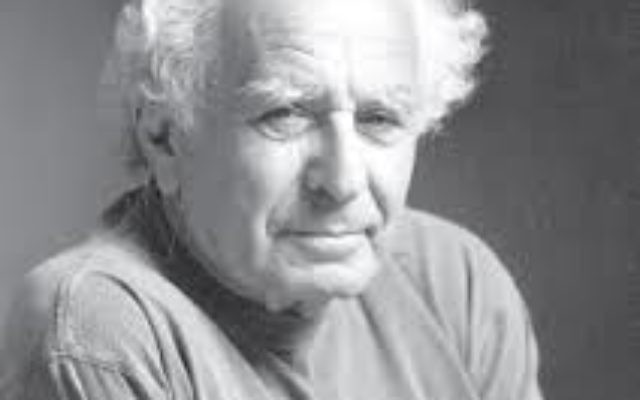Temple Evolved From Center of Worship to Identity
One Man’s Opinion by Eugen Schoenfeld
This is the second of a four-part series examining the Jewish people’s eternal longing for Israel. Here’s the first part.
What made the kingdoms of Israel and Judaea so different that residents of the former, unlike the latter, could not retain their Jewish identity in exile and were integrated into the dominant population?
While Israelites and Judeans may have differed in the social conditions of their land of exile, the Israelite connection to Jewish beliefs was far weaker than that among the Judeans.
When the 10 northern tribes for economic and social reasons seceded from the southern tribes, they also underwent a great change in identity. The Temple, which was central to Jewish life in Judaea, had lost its importance to the Israelites. In many ways they were discouraged from participating in the pilgrimage holidays, lest they lose their political independence.
The Temple, the symbol of the relationship between the people and G-d, was in Jerusalem. Israel tried to replicate the Temple at Bethel and Dan at the cost of eliminating the essentialness of the Jewish rejection of idol worship and the belief that G-d also existed outside Israel.
Israel’s religion reverted to idolatry in worshipping the statues of bulls, which they called Elohim. This reversal led to the re-establishment of a territorial G-d, whom they could worship in Israel but could not take into captivity.
By contrast, Judeans took into exile the idea of the Torah, if not the Temple itself, an idea that enhanced the development of synagogues while maintaining the yearning to return to the Temple.
The idea of the Torah was instrumental for exiles’ retention of their identity as Jews. Judeans thus maintained their memory of the land of the Temple as a national symbol and their wish to return. The dream of Judaea became greater than Judaea itself.
This is a desire later expressed by Yehudah Halevi, who stated, “My heart is in the East, and I am in the end of the West.”
When the second Temple was destroyed nearly 650 years after the Babylonians destroyed the first Temple, it was a national calamity not only because we lost a building, but also because we lost the mechanism through which we related to G-d. The loss of the Temple was tantamount to the loss of the cultic function, but, more important, we also lost the symbol of Jewish independence.
We worshipped G-d — the historical G-d who brought us out of Egypt and established us as an independent entity — and we could not accept and elevate Roman emperors or their idols to the status of our G-d.
The Temple as a symbolic representation of independence became central in the Maccabean revolt in 167 B.C.E. Although the Temple was important for the performance of the sacrifices, the rebellion was primarily a political act that led to the establishment of the Maccabean dynasty.
By the time the second Temple was destroyed by the Romans, the ancient cultic religion was being superseded by a new institution, the synagogue, a place where prayers were accepted in lieu of the Temple sacrifices.
The synagogue became the house of prayer, and study was substituted for sacrifices, becoming the new avodah, or holy work. Gemilat chassodim, acts of kindness, became a substitute for animal sacrifice as a means of atonement of sins.
The following story about Rabbi Yochanan ben Zakkai, who is noted for saving Judaism, suggests that the Temple became a symbol of history rather than for the cultic sacrificial worship. Right after the loss of the second Temple in 70 C.E., ben Zakkai walked with a student near the Temple ruins, and the student lamented that we had lost our capability to be redeemed from our sins through sacrifice.
The rabbi responded that we had a far better way to atone for our sins: through the performance of acts of kindness. To ben Zakkai, the Temple ceased to have a significant function. At best, it assumed a new function as a symbolic representation of our nationhood and identity.
Of the thousands of Jews taken captive and settled in Babylon, only a fraction of them returned to Judaea 70 years later when Persian King Cyrus permitted Jews to return to their land, and the largest portion among them were the Levites and Kohanim, the Temple servants and priests. The rest of the Jews remained in Babylon in a more economically advanced country.
The Temple and Judaea had lost their significance to Jews who during those 70 years found life in Babylon preferable. Only about 50,000 exiles returned. To the rest of the Judeans, their historical homeland retained only a symbolic significance, and they felt only that it was their mission to support that land in the same manner as Diaspora Jews support Israel today. It was their duty to financially support the restoration of the Temple and the country.
Babylonian Jews developed their new way of life, in which the synagogue and prayer replaced the priestly performances in the Temple. It is thus understandable that most people who returned with Ezra were priests and Levites, who previously would have served in the Temple and for whom the primary function was to rebuild the Temple.
The new Temple served to maintain a Jewish identity for the Judeans who remained in Babylon and continued to dream of a glorious Jerusalem.
Next week: How the dreams of Israel evolved through nearly 2,000 years of the Diaspora.





comments